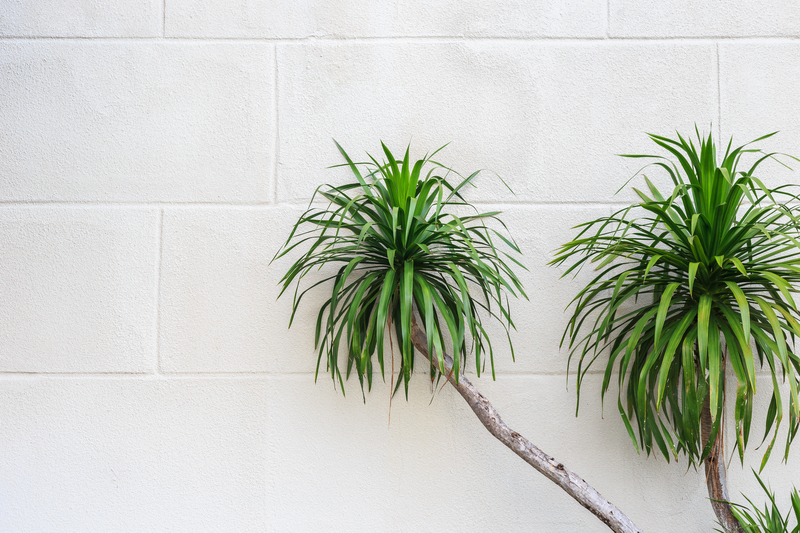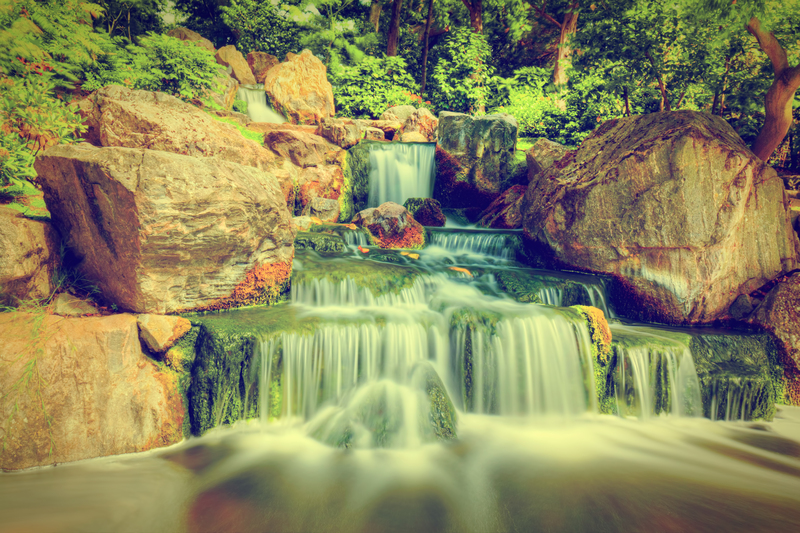An Enthusiast's Guide to Container Gardening
Posted on 17/08/2025
An Enthusiast's Guide to Container Gardening
Container gardening is a rewarding and versatile practice for plant lovers, urban dwellers, and anyone interested in bringing a touch of green to even the smallest spaces. Whether you have a spacious patio or a modest balcony, this comprehensive guide will walk you through everything you need to know about growing plants in containers, from choosing the right pots to maintaining lush, healthy foliage all year round.
Why Choose Container Gardening?
Container gardening offers flexibility, accessibility, and creativity that traditional gardening sometimes lacks. It's ideal for urban gardening enthusiasts who may not have access to a backyard, as well as homeowners looking to add color and life to patios, decks, or windowsills. Here are some of the standout advantages:
- Space Efficiency: Make the most of limited areas such as balconies, rooftops, and small porches.
- Control Over Soil and Conditions: Tailor the growing medium for each plant, reducing the likelihood of pests and diseases.
- Design Versatility: Mix and match pots, containers, and planting arrangements for unique, personalized compositions.
- Ease of Access: Raised containers make gardening more accessible for those with mobility issues.
- Mobility: Easily move containers to catch the sun, avoid harsh weather, or redecorate your space.

Getting Started: Choosing Containers and Locations
Types of Containers for Your Garden
Choosing the right plant container is essential for the health and aesthetics of your garden. When selecting containers, consider material, size, drainage, and visual appeal.
- Terracotta & Clay Pots: These are traditional choices with rustic appeal. They're porous, allowing roots to breathe, but may dry out quickly.
- Plastic & Resin Pots: Lighter and more affordable, these retain moisture longer and are easier to move around but may lack the charm of natural materials.
- Ceramic Containers: Glazed ceramics are stylish and retain moisture well, though they can be heavy and prone to cracking in cold climates.
- Wooden Planters: Offer a natural, rustic look but require proper treatment to avoid rot.
- Novelty Recycled Containers: Baskets, buckets, crates, and even old boots or teapots can become unique homes for your plants.
Selecting the Perfect Spot
The location of your container garden will significantly affect plant health. Factors to consider include:
- Sunlight: Most vegetables and flowering plants need at least 6 hours of direct sunlight daily. Leafy greens and some herbs tolerate partial shade.
- Wind: Balconies or rooftops can be windy; shields or heavier pots can prevent tipping and water evaporation.
- Drainage: Ensure your space can handle excess water runoff to avoid messes and potential damage.
Soil Mixes and Potting Medium
The right potting soil is a game-changer for container gardening success. Unlike garden soils, container soils must be lightweight, well-draining, and rich in nutrients.
- Commercial Potting Mix: Most store-bought mixtures are designed for optimal drainage and moisture retention, with added fertilizers.
- DIY Soil Mix: Blend equal parts peat moss (or coconut coir for a sustainable option), perlite or vermiculite, and quality compost for a balanced, nutrient-rich medium.
- Specialty Soil: Cacti, orchids, and succulents need custom mixes; research plant-specific needs for the best results.
Tip: Don't use soil from your yard for container gardening--it's often too dense, may harbor pests, and can compact around delicate roots.
What Can You Grow in Containers?
Container gardening isn't limited to a handful of species. With the right selection and care, almost any plant can thrive! Here's a breakdown of top choices:
Herbs and Edibles
- Basil, Parsley, Cilantro: Require 4-6 hours of sun. Keep the soil moist and harvest regularly for bushier growth.
- Mint: Extremely adaptable but prefers partial shade. Grow in its own pot as it spreads aggressively.
- Tomatoes & Peppers: Compact 'patio' varieties are ideal. Stake tall plants for support and use large containers for best yields.
- Salad Greens: Lettuces, spinach, and arugula thrive in cooler weather and shallow containers.
- Radishes & Carrots: Choose deep pots and loose soil for root crops.
- Strawberries: Perfect for hanging baskets or tiered planters.
Ornamental Plants and Flowers
- Petunias, Geraniums, Marigolds: Classic annuals bursting with color.
- Begonias & Impatiens: Flourish in shade or partial sunlight, making them perfect for north-facing balconies.
- Ornamental Grasses & Ferns: Add texture and drama to your container arrangements.
- Dwarf Shrubs: Boxwoods, hydrangeas, or even compact roses can be grown in larger containers for a touch of formality.
Indoor Container Gardening Options
- Houseplants: Snake plants, pothos, spider plants, and peace lilies are low-maintenance indoor choices.
- Small Citrus Trees: Dwarf lemons and calamondins thrive in large pots near sunny windows.
- Succulents and Cacti: Great for beginners due to their low water requirements and sculptural shapes.
Designing a Beautiful Container Garden
Thoughtful design can turn your planters and pots into living art. Plenty of container garden enthusiasts follow the "thriller, filler, spiller" technique:
- Thriller: A bold, upright plant for height and drama (like ornamental grass or small shrub).
- Filler: Midsized, bushy plants that fill out the composition (like petunias or coleus).
- Spiller: Trailing plants that cascade over the pot edge (like ivy or lobelia).
Mixing heights, textures, and colors creates visually stunning containers. Consider complementary color palettes and season-long interest by blending annuals, perennials, and evergreens.
Planting and Care Tips for Container Gardening
How to Plant for Maximum Success
- Pre-moisten the Soil: Fill the container two-thirds with moist potting mix.
- Arrange Plants: Place tall plants at the back or center, with fillers and spillers surrounding as desired.
- Backfill and Firm: Fill in around roots, press gently but don't compact the soil tightly.
- Water Thoroughly: Ensure water drains from the bottom holes and soil is evenly moist.
Watering and Fertilizing
- Regular Watering: Containers dry out faster than garden beds. In hot weather, daily watering may be necessary; check moisture by feeling the top inch of soil.
- Mulching: Add a layer of pebbles or mulch to reduce evaporation, especially in the summer months.
- Feeding: Most potted plants need extra nutrients. Use a balanced, water-soluble fertilizer every 2-4 weeks during the growing season for lush, healthy growth.
Pest and Disease Management
- Inspect Regularly: Check leaves (especially undersides) for aphids, mites, or fungal spots.
- Organic Solutions: Neem oil sprays, insecticidal soaps, and hand-picking pests keep problems manageable without chemicals.
- Air Circulation: Thin crowded arrangements and ensure containers are spaced to allow good airflow, minimizing disease risk.
Overcoming Common Container Gardening Challenges
Even enthusiasts can run into issues with their potted gardens. Here's how to troubleshoot some of the most common concerns:
- Root-Bound Plants: If roots circle inside the pot or grow out of drainage holes, it's time to repot or divide.
- Wilted Foliage: Could be a sign of underwatering, overwatering, or poor drainage. Adjust care as needed.
- Leggy Growth: Not enough sunlight; move containers to a brighter spot or rotate for better light exposure.
- Yellow Leaves: Indicates possible nutrient deficiency, overwatering, or disease - diagnose by checking the root health and soil moisture.
Seasonal Container Gardening Tips
Spring and Summer
- Refresh soil: Replace some or all old potting mix for vigorous new growth.
- Switch Displays: Add spring bulbs, summer annuals, and herbs for color and harvests.
- Fertilize: Begin regular feeding as plants enter their active growing period.
Autumn
- Swap in cool-season plants: Pansies, ornamental cabbages, and kales thrive as temperatures drop.
- Reduce watering: Plants need less moisture as the weather cools.
- Mulch and insulate: Prepare tender perennials for possible frosts by moving pots closer to walls or adding protective wraps.
Winter
- Bring indoors: Tropical or frost-sensitive container plants can overwinter near sunny windows.
- Monitor for pests: Indoors, plants may attract spider mites or fungus gnats. Keep humidity up and isolate new plants initially.
- Water sparingly: Most plants go dormant; too much water can cause root rot.

Inspiring Ideas for Creative Container Gardening
- Vertical Container Gardens: Use wall-mounted planters, pocket organizers, or stacked pots to grow upwards and save space.
- Theme Containers: Try a culinary herb pot, a pollinator-attracting flower mix, or an all-succulent dish garden.
- Hanging Baskets: Add layers and dimension to porches and balconies with trailing plants and colorful blooms.
- Edible Wall Gardens: Combine dwarf vegetables and salad greens in coordinated displays you can harvest right outside your door.
Conclusion: Begin Your Container Gardening Journey
Container gardening is a delightful pursuit for enthusiasts of all skill levels and living situations. With a bit of planning, the right care, and your creative vision, you can cultivate a lush display of flowers, herbs, edibles, or indoor plants in any space. Remember to keep experimenting with different plants, arrangements, and containers--even the smallest pot can become a miniature oasis!
Start your own container garden today and enjoy the endless rewards of nurturing green life a pot at a time.
For more tips, guides, and inspiration on container gardens and urban gardening, browse our related articles or subscribe for the latest in home gardening trends!



